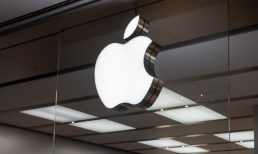The split comes after years of floundering for the company and attempts to sell Victoria’s Secret, as well as the divestiture and subsequent closure of The Limited brand. Wexner also stepped down as CEO of L Brands in 2020 amid examinations of his long-time relationship with deceased billionaire sex trafficker Jeffrey Epstein, and then retired from the company’s board earlier this year.
But as of Monday (August 2), executives say the era of turmoil is now in the past. Victoria’s Secret, trading as VSCO, has undergone a substantial relaunch of the brand to focus more on women’s self-expression. And Bath & Body Works, trading as BBWI, aims to capitalize on consumers’ post-pandemic attention on beauty and wellness.
Beyond Bath and Body
Bath & Body Works has made a name for itself selling fragrances, soaps, hand sanitizers and other personal care products, and much of the business won’t be changing under Andrew Meslow, who was formerly CEO of the combined L Brands company. The focus remains on home fragrances, body care and fragrances, and soaps and sanitizers, though Meslow said he sees opportunities for expansion into skincare, hair care, wellness and other home categories.
The bath, body and beauty market is worth $71 billion, according to Bath & Body Works estimates, and the company only has a 3 percent share.
Advertisement: Scroll to Continue
Julie Rosen, president of Bath & Body Works, told investors and analysts on a conference call that new categories won’t cannibalize the company’s current product lines, but hopefully will attract a younger customer. “When you think about the wellness and natural market … that is very important to a younger customer,” Rosen said. “So we’re looking at how to increase our total customer count.”
While the retailer has had “exceptional recent results” in recent years, Meslow said on the same conference call, Bath & Body Works still has room to grow. The company has more than doubled the number of consumers who shop across multiple channels over the last four years, but these so-called dual-channel customers still only represent about 18 percent of the total base.
Meslow noted, though, that the pandemic has meaningfully increased consumers’ focus on soaps and sanitizers, “so I would expect that both the soap and sanitizer business, even at a normalized level, will be at higher penetrations than they have been historically to our business.”
Bath & Body Works is currently piloting a customer loyalty app in four markets, where the company has seen approximately 30 percent more spending per loyalty member versus non-loyalty members. The pilot will expand to two additional markets this fall, Meslow said, and will launch across the U.S. in 2022.
While rewards programs are important for retailers — nearly 40 percent of consumers have used or would use them, PYMNTS research has found, and 94 percent of top-performing merchants offer rewards programs — Bath & Body Works and others may be approaching consumers’ limit. Approximately 1,000 new loyalty programs are expected in the next six months, in addition to the thousands that already exist.
New Secrets for Victoria
Victoria’s Secret, on the other hand, is charting an almost completely new path for the company, focusing less on sex appeal and more on female empowerment.
New CEO Martin Waters, who was previously the head of L Brands’ international division, told investors and analysts that in recent years, the company “got it wrong” and lost relevance with the modern woman as she turned her focus from how people look to how people feel. Among those missteps were the wrong types of products, an underinvestment in digital and overinvestment in stores, and a failure to reposition the brand that ultimately made Victoria’s Secret seem tone-deaf.
“Our job now is to rebuild the foundation, go back to the fundamentals, and that’s where we start right now,” Waters said.
To reorient over the past several months, Victoria’s Secret has changed the way it brands and markets itself. It has launched the VS Collective, a partnership with several high-profile women who will appear in advertising and advise the company; it has also introduced a new maternity line and a relaunched swimwear line.
Still, the core of the business remains bras, Waters said — and in that, Victoria’s Secret may find more trouble than it has in years past. While Wexner and other former executives drove the brand through its missteps, outsiders saw an opportunity to steal market share, with myriad direct-to-consumer (D2C) lingerie companies popping up in the past decade.
That’s why, along with most other retailers, Victoria’s Secret is focusing on attracting an omnichannel consumer, where Waters said he sees “the real opportunity for this business.” Two hundred Victoria’s Secret locations now ship eCommerce purchases from the store, and by the end of August, 200 will offer buy online, pick up in-store (BOPIS).
Another advantage, Waters noted, is that 80 percent of the retailer’s engagement comes from mobile, as does 60 percent of its sales. According to PYMNTS research, over 90 percent of consumers own smartphones, and 14 percent made purchases via mobile in the last 24 hours.
“This is a business at absolute scale,” Waters said. “And it’s a business that has been underinvested in over time and is now positioned to gain the benefits of those years of investment.”




